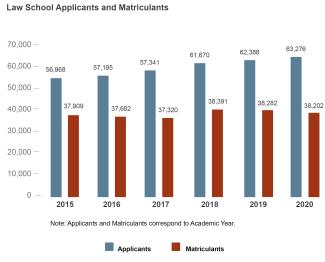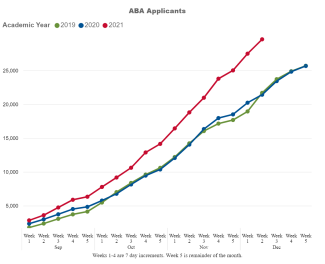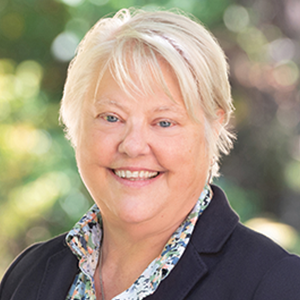Starting Law School Amid a Pandemic: The Incoming Class of 2020
Not only did a class of law students graduate in 2020 amid the ravages of the COVID-19 pandemic, a new class also just began their studies during this “one-of-a-kind” year. What do we know about this intrepid group? Each fall, LSAC works closely with the ABA Section on Legal Education and Admissions to the Bar and law schools across the United States to compile enrollment data for the incoming class of law students. This aggregated “Standard 509” data provides a snapshot of the size and make-up of the incoming class, including number of students, full- and part-time status, racial, ethnic, and gender information, as well as LSAT score and undergraduate GPA by quartiles for each law school. This data also provides an opportunity to look at areas of progress and emerging trends that could affect the future of legal education and our justice system more broadly.
Top Takeaways
This year’s enrollment data show some positive trends for legal education, as well as areas that need further attention particularly in light of the pandemic’s effects on higher education.
The overall size of the incoming JD class for 2020 is substantially similar to 2019, although the applicant pool was larger. For 2020, there are 38,202 incoming JD students at 197 ABA-accredited law schools, compared to 38,282 incoming JD students at 199 ABA-accredited law schools in 2019. These levels are notable for several reasons: first, they demonstrate the continued strong interest in law school even as many schools transitioned to teaching in remote or hybrid models; second, they demonstrate that schools continue to be sensitive to the job market and opportunities for new lawyers to put their hard-earned degrees to work. As the National Association for Law Placement (NALP) has observed, the job market for JD graduates has become stronger in recent years in part because of a better match between the number of jobs and the number of graduates.
Between 2019 and 2020, the incoming class size was larger at 106 schools, unchanged at 5 schools, and smaller at 86 schools.

Note: Applicants and Matriculants correspond to Academic Year.
| 2015 | 2016 | 2017 | 2018 | 2019 | 2020 | |
|---|---|---|---|---|---|---|
| Applicants | 56,968 | 57,195 | 57,341 | 61,670 | 62,388 | 63,276 |
| Matriculants | 37,909 | 37,682 | 37,320 | 38,391 | 38,282 | 38,2020 |
Considering all factors at play this past year, these numbers are remarkable. Applicant volumes were on par with 2019 back in January 2020, then started to dip sharply as the COVID-19 pandemic unfolded across the United States and around the world. By May 2020, applicant volumes were 2.4% below 2019 and some observers were warning we could see as much as a 10% decrease in applicants for the fall. The pandemic’s impact was particularly severe among some underrepresented groups. For instance, Black/African American applicant volumes were running 5.1% below 2019 and Hispanic/Latinx applicant volumes were behind by 1.5%.

Fortunately, legal education was able to successfully pivot, as LSAC quickly developed and delivered the LSAT remotely starting in May, and law school deans and admission teams showed incredible commitment to helping candidates continue their enrollment journeys. As a result, we saw applicant volumes start to rebound and we ultimately ended the 2020 cycle with a 1.6% increase in applicants compared to 2019. Several minoritized groups saw even larger increases, with Black/African American applicant volume ending up 2.4% above 2019 and Hispanic/Latinx applicant volume rising 4.1% above 2019, respectively. We saw smaller but similar rebounds throughout the summer across many demographic groups.
These positive trends carried through to the incoming student numbers, as well. When using maximum reporting, LSAC’s preferred reporting method because it captures all the racial and ethnic categories in which a candidate self-identifies, Black/African American students comprise 9.7% of 2020 matriculants, compared to 9.5% in 2019 and 9.7% in 2018. Hispanic/Latinx students make up 12.4% of this year’s incoming class, up from 11.8% in 2019 and 11.5% in 2018.
Overall, the percentage of students from each of the major racial and ethnic groups admitted to JD programs continues to track closely with the percentages of college graduates within those same groups and has remained relatively stable over the past five years. According to our data, American Indian/Native Alaskan students comprise 1.8% of the 2020 incoming class, compared to 1.9% in 2019. Asian students comprise 10.4% of the 2020 incoming class, compared to 10.2% in 2019 and 10.1% in 2018. Caucasian/White students comprise 67.8% of this year’s incoming class, compared to 68.7% in 2019 and 71.4% in 2018. We are also seeing an increase in the number of students choosing not to indicate their race/ethnicity.
Law schools used the LSAT as one factor in their admission process for over 98% of matriculants in 2020, and the diversity of matriculants entering law school with an LSAT score is greater than the diversity of the small number who were admitted without an LSAT score.
On gender, we continue to see steady growth in the proportion of women entering law school. This year, 54.0% of incoming students are women, compared to 44.1% men. For comparison, as recently as 2015, men comprised more than half of incoming law students, but the proportion of women has increased steadily over the past five years. We are also seeing a steady increase in the number of candidates who identify as nonbinary or who decline to state their gender.
We continue to see a slow but steady rise in matriculants’ undergraduate GPAs and LSAT scores. Median LSAT scores increased at 71 law schools between 2019 and 2020, decreased at 25 schools, and remained the same at 101. Similarly, median GPAs increased at 118 law schools, decreased at 56, and remained the same at 23.
Trends to Watch
It is still early in the 2021 application cycle, but according to LSAC data, we are seeing very significant growth in terms of the overall number of applicants and applications, with strong growth across all demographic groups.
As of today, the total number of JD applicants is up 38.2% compared to this time last year. For some demographic groups, the increase is even larger — Black/African American applicants are up 45.1% percent compared to this time last year. And applicants are applying to more schools, on average, so far this year compared to last.

There are many factors which may help to explain such dramatic increases. The number of applicants tends to go up during down economies, as people try to ride out a slow job market and invest in their skills. Additionally, the enormous societal challenges and opportunities of this moment may be inspiring more people to pursue a career in law. When you look at the world through the eyes of our candidates, they see so many issues — COVID-19, systemic racism, economic inequality, political polarization, climate change — that they are inspired to dive in and make a difference. I call it the “RBG Moment,” in honor of Ruth Bader Ginsburg. Our candidates have “Really Big Goals,” and they see the law as the way to make an impact.
It may also be that people are applying earlier, taking advantage of the time during the COVID-19 lockdowns, and therefore we may see those large year-over-year growth numbers come down as we continue to move through this year’s application cycle. Nonetheless, we anticipate a larger applicant volume than last year — perhaps 10-20% more. It will be interesting to see how schools respond to this surge in applicants, with a careful eye toward the job market for JD graduates.
While this year’s data on the size and diversity of the entering JD class includes some positive trends, we still have work to do. COVID-19 is creating a troubling drop in first-year undergraduate enrollment, particularly among minoritized students, which will negatively impact the potential law school applicant pool in the next few years.
We need to maintain and expand pipeline-building programs that reach beyond college to high school and even junior high to encourage and support diverse candidates in both their undergraduate journeys and their law school journeys. Given that law school enrollment levels for nearly all racial and ethnic groups are currently roughly equivalent to college graduation rates, we need more focus on expanding the pool of college graduates to make further much-needed progress diversifying the legal profession.
LSAC is continuing to work with our member law schools to build the justice pipeline, and the COVID-19 emergency has required us to find new ways to connect with candidates. With in-person gatherings severely restricted, we converted our nationwide Law School Forums to digital events, enabling us to reach far more prospective students. This year, over 16,000 unique individuals attended our virtual forums, meeting with representatives from over 200 law schools. (For comparison, we had over 7,000 unique attendees at our in-person forums in 2019.) In the same way, we reimagined our Prelaw Undergraduate Scholars (PLUS) programs, reaching approximately 200 minoritized and economically challenged candidates with our traditional four-week intensive program, and reaching another 400 with a condensed program of five workshops on key elements of the law school admission process. Our free Official LSAT Prep resources available on Khan Academy and LawHub have helped create access and opportunity for candidates preparing to take the LSAT. An average of 70,000 people use the free LSAT prep through Khan Academy each month, with use particularly high among Black/African American and Hispanic/Latinx students, as well as women and economically disadvantaged candidates. Our free candidate webinar series focused on navigating law school admission during COVID-19 has been attended by 25,000 people, and our Be Indivisible and Discover Law campaigns have helped attract 900,000 new visitors to LSAC.org in the past six months, helping to make law school more accessible and relatable, as we feature a diverse set of law school students and graduates sharing their stories.
These are just a few of the trends and opportunities we see in the applicant and matriculant data just published. We will continue to update the data and trends as this year’s cycle progresses. COVID-19 and resulting economic conditions, as well as other powerful forces, are making this admission cycle a year unlike any other. We will all need to remain nimble and flexible and work together to champion law and legal education. I am inspired by the surge in applicants wanting to pursue a career in justice. Despite all the pain and ravages of COVID-19, I believe we have an opportunity to channel our energies into creating a legal system that also deserves to be called a “system of justice.”

